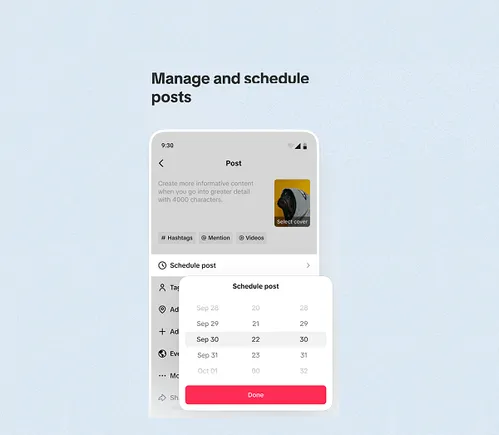Does anyone like change? Most of us get settled in our ways, comfortable with the status quo both in our personal lives and at work. Change is hard. It’s disruptive. Many people fear change—because it is a step into the unknown.
In the business world change has always been constant but the pace of change today is fast and furious. The integration of new technologies (especially generative AI), hybrid work models, economic uncertainty, and the continuing headache of talent shortages creates an extremely challenging workplace for leaders.
A recent Gartner report plainly stated that while transformation remains central to the business agenda employees are tired of change. That’s not a great surrise considering Gartner found the average employee experienced an astounding 10 planned enterprise changes in just 12 months.
Says Gartner, “Willingness to support organizational change collapsed from 74% of employees in 2016 to just 43% in 2022. Unless navigated expertly, organizations’ transformation ambitions will stymie, the employee experience will suffer, and ‘quiet quitting’ and attrition will follow.”
Business leaders are concerned about their ability to handle the disruption of change, according to a survey of nearly 2,000 executives and senior managers conducted by The Odgers Berndtson in association with Harvard Business Review Analytic Services. While 95% believe that managing disruption is vital to the success of their organization, a staggering 85% lacked confidence in their own leadership team’s ability to do so.
Successfully implementing change management involves several key steps and considerations for CEOs to successfully navigate the change minefield. From my experience as a human capital strategist working with companies across the company here are some basic strategies (and some that are a little more unusual) I’ve seen to be effective.
Start with the end in mind: Establish a clear vision for the specific objectives you want to achieve. And don’t delay. One of Jack Welch’s famous Six Commandments when he led GE was “Change before you have to.”
Lead by example: Strong leadership is crucial to drive change. Be fully committed to the change and be the role model. This doesn’t mean top-down dictates. Change management must be a collaborative process and the leadership team must be aligned in its thinking and messaging.
Get buy-in: Make sure that all stakeholders affected by the change are involved at an early stage. Get their input. Understand their needs and concerns to get them onboard and help tailor the process. Your team needs to be able to articulate the ‘why’ behind the changes you’re making.
Give them a voice: According to the O.C. Tanner 2024 “Embracing Change” report, surveys, focus groups, town halls, and one-to-one meetings all impact perceptions that change is positive; however, when organizations use all four methods of gathering feedback, the odds that the change is perceived positively improve by 1,284%.
Such collaboration is obviously essential. As Lisa Bodell, CEO of FutureThink and author of Why Simple Wins: Escape the Complexity Trap and Get to Work That Matters, says, “Change cannot be put on people. The best way to instill change is to do it with them. Create it with them.”
Active participation: Appoint change agents within the organization to promote and support at different levels—people who can function as intermediaries to manage any resistance and encourage a positive attitude during transitions.
Timeline: It’s important that there’s a long-term change implementation plan in place. Don’t rush it. Change necessitates thoughtful, phased approaches. Put together a comprehensive step by step program so that everyone can mark progress made.
Training and support: Provide training and resources so that everyone understands their role in the new undertaking and have the knowhow to implement. Ongoing coaching and mentoring may be necessary. Seek expert help outside of the company.
Be flexible: Regularly monitor progress towards the change and make adjustments as needed. There are bound to be unforeseen challenges and the ability to be agile and pivot is a critical element for success.
Communicate clearly: It’s vital to let everyone know what’s happening. If you don’t communicate effectively both at the beginning and throughout the change process the rumor mill will work overtime. Detail the benefits change will bring as well as the progress—and even lack of progress. Keeping everyone in the loop enhances involvement.
Idea hackathons: Organize hackathons or innovation labs where employees can submit and pitch their ideas for change. This not only empowers employees but also encourages a culture of creativity. Be sure to reward and recognize the contributors of winning ideas.
Culture is key: Last but not least conduct a cultural assessment before you begin. Do you have the kind of organizational culture in place that can accommodate change? I suggest you read my first book which will help you assess the state of your culture and plan accordingly. It’s called “Culture Spark: 5 Steps to Ignite and Sustain Organizational Growth.”
Final thoughts: Implementing change is a complex process that requires careful planning and execution. Adopting a people-centric approach (keeping employees in mind throughout the change process) is essential. This approach not only enhances employee satisfaction and retention but also improves the overall success rate of organizational changes. By following these strategies you greatly increase your chances of managing change and achieving the desired outcomes.
Written by Jason Richmond.
Have you read?
The American Corporate Dilemma: Merging Profit with Purpose.
Pasit Viwatkurkul: Shaping the Future of Warfare Entrepreneurship.
Don’t be vanilla – the key to creating content that resonates with eager-to-buy customers.
Kenton Epard’s Integrated Approach to Coaching: Blending Logic and Emotions for Success.
Flourishing at Work: Diane O’Connell’s Roadmap to Wellbeing Reinvention.
Add CEOWORLD magazine to your Google News feed.
Follow CEOWORLD magazine headlines on: Google News, LinkedIn, Twitter, and Facebook.
This report/news/ranking/statistics has been prepared only for general guidance on matters of interest and does not constitute professional advice. You should not act upon the information contained in this publication without obtaining specific professional advice. No representation or warranty (express or implied) is given as to the accuracy or completeness of the information contained in this publication, and, to the extent permitted by law, CEOWORLD magazine does not accept or assume any liability, responsibility or duty of care for any consequences of you or anyone
else acting, or refraining to act, in reliance on the information contained in this publication or for any decision based on it.
Copyright 2024 The CEOWORLD magazine. All rights reserved. This material (and any extract from it) must not be copied, redistributed or placed on any website, without CEOWORLD magazine’ prior written consent. For media queries, please contact: info@ceoworld.biz
SUBSCRIBE NEWSLETTER







































































